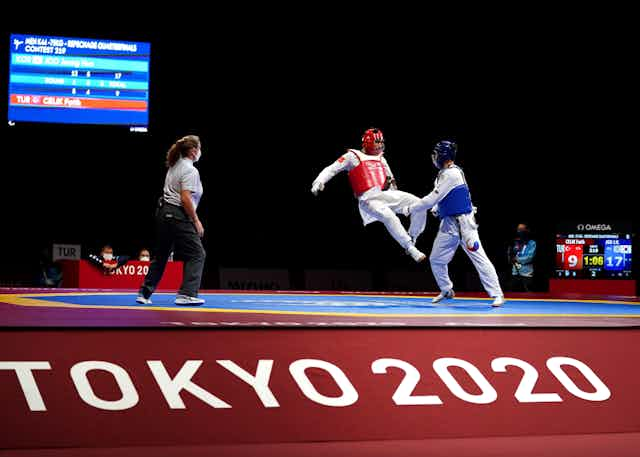For fans of martial arts, Tokyo 2020 was always going to be something to look forward to. Along with para badminton, the programme this year saw para taekwondo make its debut.
The new discipline joins para judo and wheelchair fencing in the combat sports roster, but because of the way points are scored – by landing powerful kicks on the body – para taekwondo is the first full-contact para sport in the history of the Olympic Games. And it has not disappointed.
For the sport’s first bout on Thursday September 2, Afghanistan’s Zakia Khudadadi emerged on the mat to spar with Ziyodakhon Isakova of Uzbekistan, AC/DC’s Thunderstruck playing over the speakers. Khadadadi was one of only two Paralympians who made it out of Kabul in time to compete in Tokyo.
Isakova won and para taekwondo has continued making headlines. Leonor Espinoza Carranza took Peru’s first gold medal in Tokyo, and the country’s first Paralympic gold since Sydney 2000, in the women’s up to 49kg category.
Chances are that even if you don’t know the rules, you’ll find para taekwondo exciting to watch. For many, the spectacular kicks that characterise the sport make it the new highlight on the Paralympic calendar.

Developing a para sport
Taekwondo was first showcased at the Seoul 1988 Games and, in 2000, made an official Olympic discipline at the Sydney Games. The subsequent development of the sport for para athletes by World Taekwondo, the official sports organisation, opened up the possibility that para taekwondo might follow suit in the future.
Starting in 2005, para taekwondo was developed from the kyorugi or free-form sparring discipline, one of several that make up taekwondo. The eligible impairments include limb impairments, arm amputations and the loss of toes which impact the ability to lift the heel properly.
The first Para Taekwondo World Championships were held in Baku, Azerbaijan in 2009, with 40 athletes from 20 nations. Participation worldwide has been on the rise ever since. The Tokyo 2020 events comprise kyorugi in three weight categories per gender, with 72 athletes competing in total.
Para athletes, like their Olympic peers, wear helmets and trunk protectors (padded vests around their chest). They compete on an octagonal padded mat, 8m wide. And bouts are organised in three two-minute rounds.
Points in taekwondo are scored by landing kicks to the body with sufficient power and accuracy. Minor adjustments have been made to the rules for para-athletes’ safety. Kicks to the head are strictly forbidden, contrary to taekwondo, and punches to the body do not score because para taekwondoins do not have the full ability to block.
Instead, athletes can score two points for a valid kick to the trunk protector. They can score additional points for more difficult kicks – one more for a turn kick; two more for a spinning kick; and three points for a kick involving a 180-degree turn.

Spectacular potential
Since 2017, athletes can score four points for 360-degree spinning kicks too. This has meant that entire matches can turn on a single move, making spectacular spin-kick combinations the essence of the sport.
Taekwondo allows for various attacks and counter-attacks with linear, spinning and circular types of kicks. Analysis of how the perfect kick is pulled off has shown that an initial so-called loading phase of the knee and hip extension is essential to the athlete being able to launch into the kicking phase.
Research shows that para athletes frequently execute dynamic moves, including turning kicks, fast kicks, cut kicks, jump back kicks, and tornado kicks, in both defence and offence. To perform these, they need exceptional speed, agility, explosive power and dynamic balance.
In addition, all elite taekwondo athletes are trained to anticipate the opponent’s moves. They pre-empt attacks by kicking the opponent directly and performing spinning kicks from short distances when they perceive an opponent’s cutting action.
To successfully perform the turning kicks, taekwondo athletes use their arms to control their rotation (angular momentum). What sets para taekwondoins apart is that they do not have the same use of their upper limbs. Instead they deploy other compensatory motions to achieve extraordinary attacks, counter-attacks, combinations and defensive movements. For many, para taekwondo offers more thrills than its Olympic counterpart.

